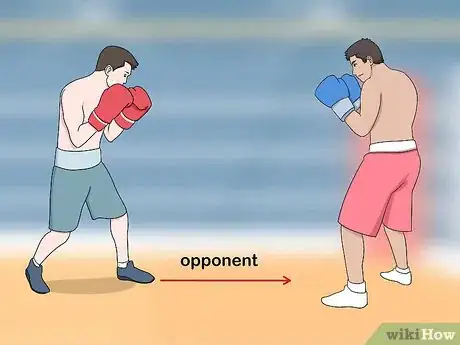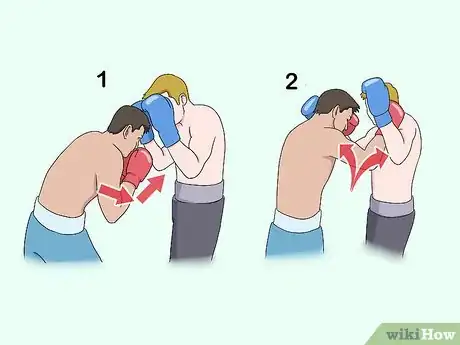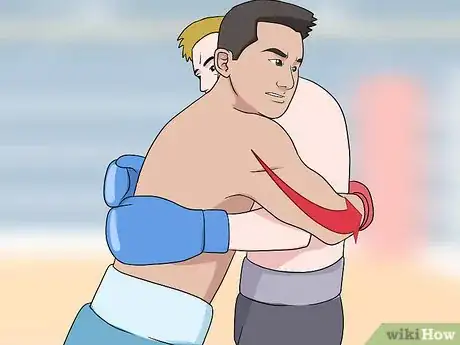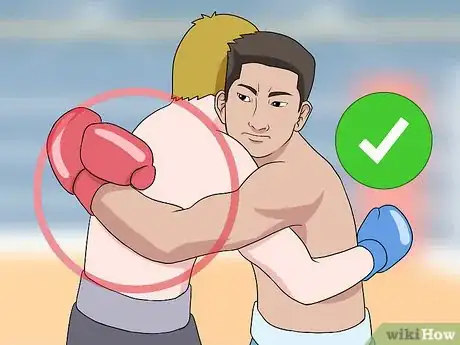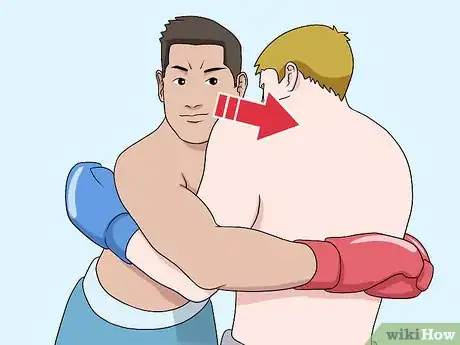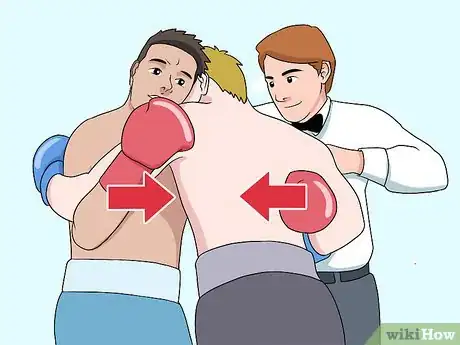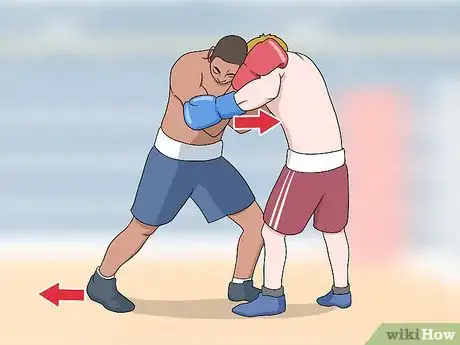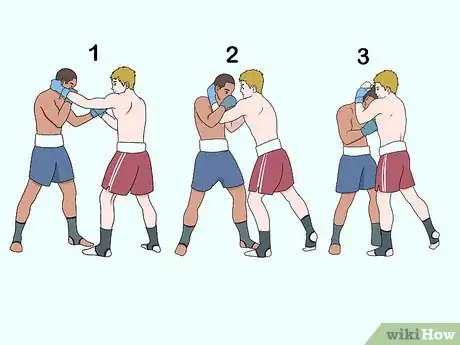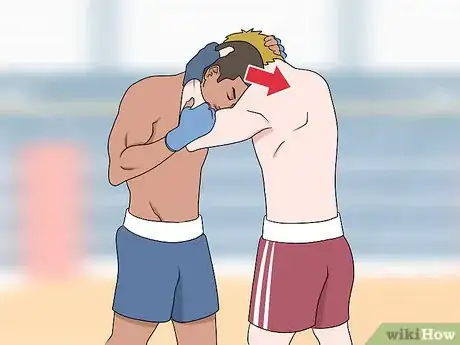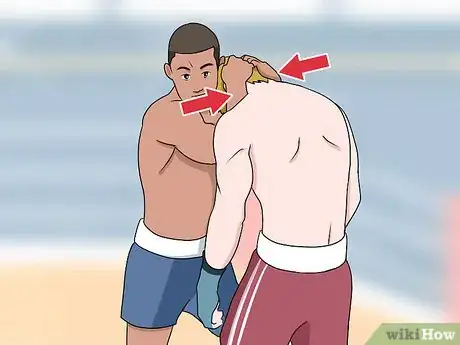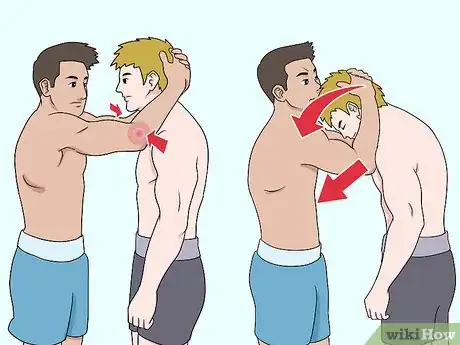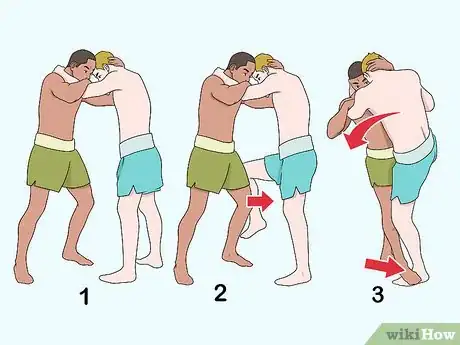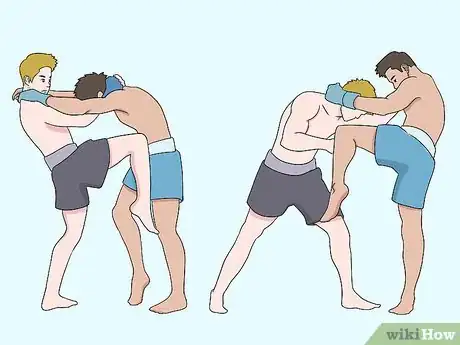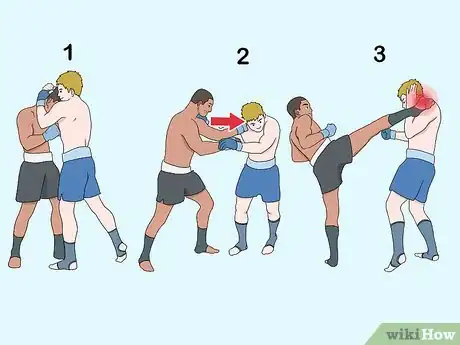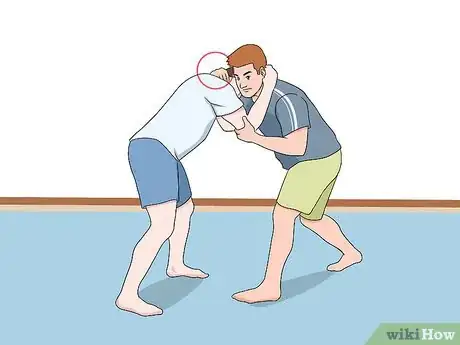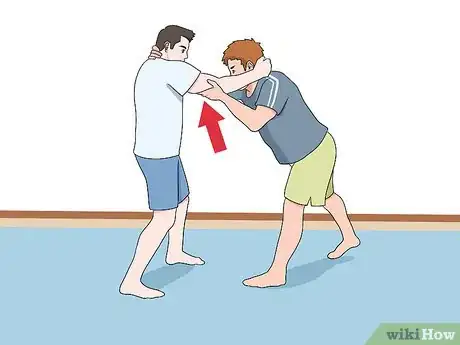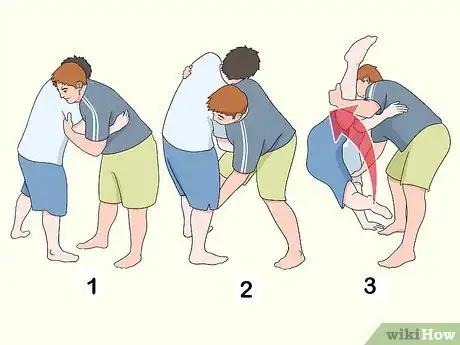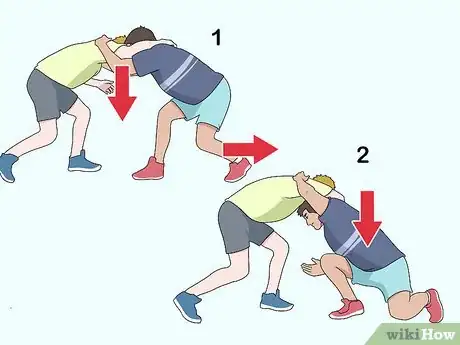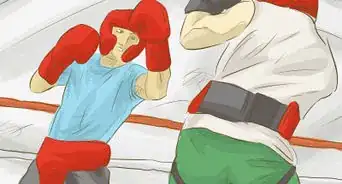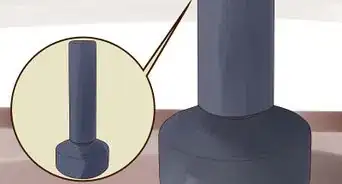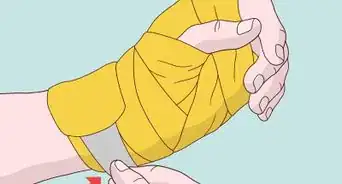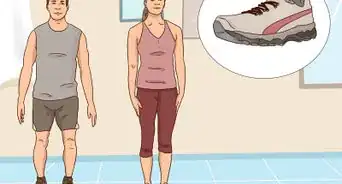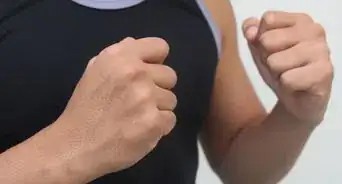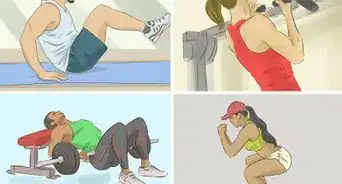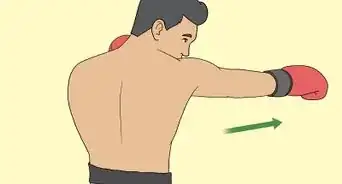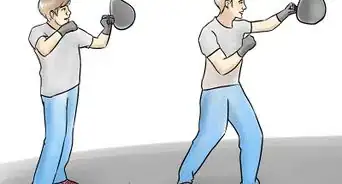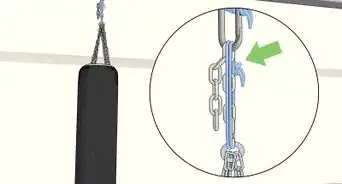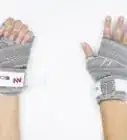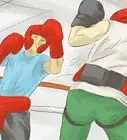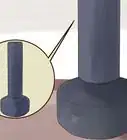This article was co-authored by Derrek Hofrichter. Derrek Hofrichter is a Self Defense Specialist and the Founder of EVKM Self Defense & Fitness in Tempe, Arizona. Derrek specializes in Krav Maga, Personal Safety, and Boxing. Derrek is a Krav Maga Third Degree Black Belt, a Senior Certified Krav Maga Instructor, and a Krav Maga Alliance Executive Board, and Training Team Member. EVKM Self Defense & Fitness was named the 2014 Krav Maga Alliance School of the Year and the 2017 Best Gym/Workout Studio in Phoenix. Derrek was named as one of the top 30 Health and Fitness Leaders in Arizona under the age of 40 by The Arizona Republic and azcentral.com in 2018. He also holds a BA in Government Public Policy from Patrick Henry College.
There are 12 references cited in this article, which can be found at the bottom of the page.
This article has been viewed 20,592 times.
Clinching is an essential aspect of boxing, Muay Thai kickboxing, and Greco-Roman wrestling. Regardless of what fighting art you're trying to learn, clinching allows you to close the distance and opens up opportunities to land inside throws or strikes to your opponent. If you feel like the person you're fighting or sparring against has superior distance control, consider going in for the clinch to shut them down.
Steps
Clinching in Boxing
-
1Walk toward your opponent with your guard up. To clinch, close the distance enough to grab onto them. If they are moving laterally and keeping their distance, move side to side while walking forward to push them into the corner of the ring or into the ropes.[1]
- Always move your lead foot before moving your back foot when advancing or else you'll be off balance if you get hit.
-
2Shoot your hands in between their arms. Once you're close enough, put both of your gloves together palm to palm and push them up, between their guard. The typical boxing guard will mean that your opponent's hands are in front or on the side of their head. You must push your hands under and up in between both of their arms to get through their guard.[2]Advertisement
-
3Wrap your arms around his biceps. Once your hands are through his guard, you can extend them out and wrap them around his biceps and upper arm area. Pushing your hands in between his guard and grabbing his biceps should be done in one fluid motion.
-
4Control both of their arms. At this point, you should have full upper body control of your opponent. Wrap your arms around his biceps and grip onto his triceps with your gloves. This will prevent him from punching you or moving around. Once you get a solid grip on their arms, you're officially in the clinch.
-
5Push your head into their shoulder to close the space in between you. Once you're clinched, pushing your head into their shoulder will protect your face and make it harder for them to land a clean shot. Your opponent will have to create distance if he wants to land a decent shot so stay as close to them as you can while in the clinch.[3]
-
6Clinch to recover. Use the clinch in boxing to regain your senses if you get hurt by a strike. You can also use it if you're fatigued and need to take a short rest. The referee will break up the clinch, so you may have to keep doing it until you recover.[4]
- Do not hit or knee your opponent from the clench—you can't do anything offensive.[5]
-
7Pivot and push to exit the clinch. To exit the clinch, you can pull your dominant foot back and push off of your opponent's chest. This will get you out of the clinch unless they are holding onto you.
- After pivoting and pushing, try to land a good combination as your opponent backs up.
- If the referee breaks you up, don't punch when you get out of the clinch.
Doing a Muay Thai Clinch
-
1Put your dominant hand behind the person's head. Extend one of your arms and grab onto to the back of your opponents head. Aim for the crown of the head, rather than the neck. Use your other hand to control their bicep and forearm if they clinch you back.[6]
- Grabbing on the neck rather than the crown makes it harder to control their posture.
-
2Push your head against the person's shoulder. If you lift your head up straight, you leave yourself susceptible to an inside elbow. As you go for the clinch, push your forehead into your opponent's shoulder to close the distance and make it harder to hit you.[7]
-
3Grip the crown of their head with your other hand. Shoot your other hand up and through his guard and cover the hand that's behind his head. Do not interlock your fingers when you do this. Instead, position your hand so that your palm is resting over your other hand's knuckles.[8]
-
4Pull your elbows close together and control their posture. Pulling your elbows close together will give you greater leverage and more power to break their posture. Pull towards you and down on the crown of their head and break their posture. Moving your arms side to side will get them off balance if you have good control.
-
5Use the clinch to open your opponent up to sweeps. If you have a good clinch on your opponent, you can pivot side to side while holding the clinch to make your opponent move and get them off balance. If you feel them off balance, you can go for a leg sweep to try to knock them down.
- It's easier to sweep your opponent when their legs are squared up, side by side.
-
6Use the clinch to open up their defense so you can strike. If you can totally control the person's head, you can pull down their head and knee them in the face. Even if you can't pull their head down, their arms will be dealing your clinch which leaves them open for knees to the ribcage and body. If they try to posture up and leave their face exposed, you can remove one hand from the clinch and do a quick inside elbow.[9]
-
7Push their head with your dominant hand to break the clinch. If you want to get out of the clinch, reposition your lead hand so that it's on the side of their head and neck. Push off with your arm to create some distance. This will disengage the clinch.[10]
- As you disengage the clinch, try throwing a roundhouse kick or a punch.
Performing a Greco-Roman Clinch
-
1Put your dominant hand behind their head. Shoot one hand past them and grip the base of their head near the neck. Bend your elbow and bring their head as close to your shoulder as you can.
- Your knees should be bent in a typical wrestling stance when you do this.
-
2Wrap your other arm under their arm. Put your other arm under their arm, and bring it up under their armpit. Your arm should grip tightly behind their back and shoulder. This will give you stability and control over their upper body.[11]
- This is also commonly referred to as an under-hook.
-
3Use the clinch to throw your opponent off-balance. Try to control your opponent when you are in the clinch. Pivoting from side to side while clinching can cause your opponent to go off balance. You can reposition your arms into double under-hooks for a throw, or you can drop down and go for a single or double leg takedown.[12]
-
4Drop down and pivot away to exit the Greco-Roman clinch. If you want to exit the clinch, you can either drop down on your knee and start to initiate a takedown or you can drop your head down and pivot your foot back to create some distance. Dropping your head down will make your opponent lose grip on your head and pivoting away will peel you away from his under-hook.
- As you clinch up, your opponent will likely mirror your clinch, or go for double under-hooks or an over-under hold.
- Try to gain a superior position as you exit the clinch.
Expert Q&A
Did you know you can get expert answers for this article?
Unlock expert answers by supporting wikiHow
-
QuestionWhat does it mean to clinch in boxing?
 Derrek HofrichterDerrek Hofrichter is a Self Defense Specialist and the Founder of EVKM Self Defense & Fitness in Tempe, Arizona. Derrek specializes in Krav Maga, Personal Safety, and Boxing. Derrek is a Krav Maga Third Degree Black Belt, a Senior Certified Krav Maga Instructor, and a Krav Maga Alliance Executive Board, and Training Team Member. EVKM Self Defense & Fitness was named the 2014 Krav Maga Alliance School of the Year and the 2017 Best Gym/Workout Studio in Phoenix. Derrek was named as one of the top 30 Health and Fitness Leaders in Arizona under the age of 40 by The Arizona Republic and azcentral.com in 2018. He also holds a BA in Government Public Policy from Patrick Henry College.
Derrek HofrichterDerrek Hofrichter is a Self Defense Specialist and the Founder of EVKM Self Defense & Fitness in Tempe, Arizona. Derrek specializes in Krav Maga, Personal Safety, and Boxing. Derrek is a Krav Maga Third Degree Black Belt, a Senior Certified Krav Maga Instructor, and a Krav Maga Alliance Executive Board, and Training Team Member. EVKM Self Defense & Fitness was named the 2014 Krav Maga Alliance School of the Year and the 2017 Best Gym/Workout Studio in Phoenix. Derrek was named as one of the top 30 Health and Fitness Leaders in Arizona under the age of 40 by The Arizona Republic and azcentral.com in 2018. He also holds a BA in Government Public Policy from Patrick Henry College.
Self Defense Specialist
-
QuestionWhy would you do a clench?
 Derrek HofrichterDerrek Hofrichter is a Self Defense Specialist and the Founder of EVKM Self Defense & Fitness in Tempe, Arizona. Derrek specializes in Krav Maga, Personal Safety, and Boxing. Derrek is a Krav Maga Third Degree Black Belt, a Senior Certified Krav Maga Instructor, and a Krav Maga Alliance Executive Board, and Training Team Member. EVKM Self Defense & Fitness was named the 2014 Krav Maga Alliance School of the Year and the 2017 Best Gym/Workout Studio in Phoenix. Derrek was named as one of the top 30 Health and Fitness Leaders in Arizona under the age of 40 by The Arizona Republic and azcentral.com in 2018. He also holds a BA in Government Public Policy from Patrick Henry College.
Derrek HofrichterDerrek Hofrichter is a Self Defense Specialist and the Founder of EVKM Self Defense & Fitness in Tempe, Arizona. Derrek specializes in Krav Maga, Personal Safety, and Boxing. Derrek is a Krav Maga Third Degree Black Belt, a Senior Certified Krav Maga Instructor, and a Krav Maga Alliance Executive Board, and Training Team Member. EVKM Self Defense & Fitness was named the 2014 Krav Maga Alliance School of the Year and the 2017 Best Gym/Workout Studio in Phoenix. Derrek was named as one of the top 30 Health and Fitness Leaders in Arizona under the age of 40 by The Arizona Republic and azcentral.com in 2018. He also holds a BA in Government Public Policy from Patrick Henry College.
Self Defense Specialist
-
QuestionHow do you perform a clench?
 Derrek HofrichterDerrek Hofrichter is a Self Defense Specialist and the Founder of EVKM Self Defense & Fitness in Tempe, Arizona. Derrek specializes in Krav Maga, Personal Safety, and Boxing. Derrek is a Krav Maga Third Degree Black Belt, a Senior Certified Krav Maga Instructor, and a Krav Maga Alliance Executive Board, and Training Team Member. EVKM Self Defense & Fitness was named the 2014 Krav Maga Alliance School of the Year and the 2017 Best Gym/Workout Studio in Phoenix. Derrek was named as one of the top 30 Health and Fitness Leaders in Arizona under the age of 40 by The Arizona Republic and azcentral.com in 2018. He also holds a BA in Government Public Policy from Patrick Henry College.
Derrek HofrichterDerrek Hofrichter is a Self Defense Specialist and the Founder of EVKM Self Defense & Fitness in Tempe, Arizona. Derrek specializes in Krav Maga, Personal Safety, and Boxing. Derrek is a Krav Maga Third Degree Black Belt, a Senior Certified Krav Maga Instructor, and a Krav Maga Alliance Executive Board, and Training Team Member. EVKM Self Defense & Fitness was named the 2014 Krav Maga Alliance School of the Year and the 2017 Best Gym/Workout Studio in Phoenix. Derrek was named as one of the top 30 Health and Fitness Leaders in Arizona under the age of 40 by The Arizona Republic and azcentral.com in 2018. He also holds a BA in Government Public Policy from Patrick Henry College.
Self Defense Specialist
References
- ↑ https://www.youtube.com/watch?v=SNPyXE5h1CE&feature=youtu.be&t=2m21s
- ↑ https://www.youtube.com/watch?v=MnQoVZdPq_Y&feature=youtu.be&t=36s
- ↑ https://www.youtube.com/watch?v=SNPyXE5h1CE&feature=youtu.be&t=3m21s
- ↑ https://www.youtube.com/watch?v=MnQoVZdPq_Y&feature=youtu.be&t=49s
- ↑ Derrek Hofrichter. Self Defense Specialist. Expert Interview. 26 January 2021.
- ↑ https://www.thoughtco.com/muay-thai-clinch-tutorial-2308355
- ↑ https://www.youtube.com/watch?v=m0Zq_LvHXPE&feature=youtu.be&t=2m16s
- ↑ https://www.youtube.com/watch?v=m0Zq_LvHXPE&feature=youtu.be&t=16s
- ↑ https://evolve-mma.com/blog/how-to-use-the-clinch-effectively-in-boxing/
